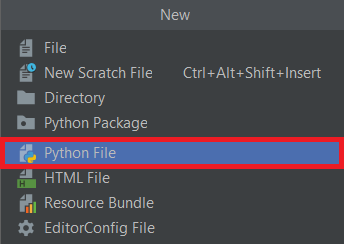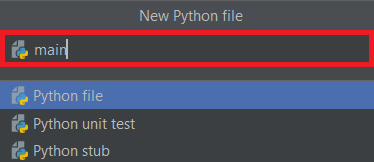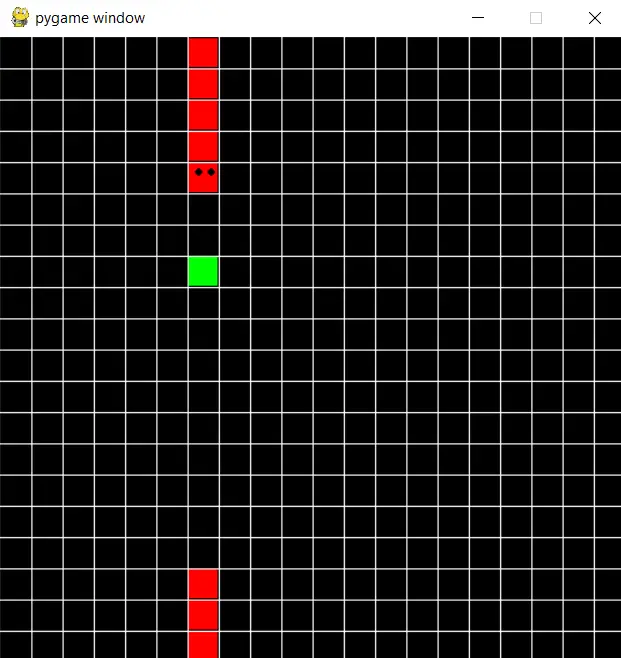In this tutorial on How to Make a Game in Python, we will make a program for a game called Simple Snake Game.
Snake Game In Python: Project Information
| Project Name: | Game In Python |
| Abstract: | Python provides a built-in library called pygame, which is used to develop the game. |
| Language/s Used: | Python with Tkinter GUI Library |
| Python version (Recommended): | 2.x or 3.x |
| Database: | None |
| Type: | Python App |
| Developer: | IT SOURCECODE |
| Updates: | 0 |
Background and Setup
The SDL library is wrapped up in pygame, which is written in Python. SDL stands for Simple DirectMedia Layer.
SDL gives you access to your system’s sound, video, mouse, keyboard, and joystick hardware, no matter what platform you’re using.
At first, pygame was made to replace the PySDL project, which had stopped moving forward. Both SDL and pygame work on multiple platforms, so you can write games and rich multimedia programs in Python for any platform that supports them.
Prerequisites
To learn how to use pygame, we need to know the Python programming language.
Installing Pygame
Before creating a Python game, we want to install the pygame library first.
To install pygame on your platform, use the proper pip command:
#command for installing pygame library
pip install pygamePygame Concepts
As pygame and the SDL library can be used on a variety of platforms and devices, they both need to define and work with abstractions for different hardware realities.
If you understand these ideas and abstractions, you will be able to make your own games.
Initialization and Modules
The pygame library is made up of several different Python constructs, which are called modules. These modules give you abstract access to specific hardware on your system and standard ways to work with it.
For example, a display lets you access your video display in the same way every time, while a joystick lets you control your joystick in a different way every time.
In the above example, after importing the pygame library, the first thing you did was set up PyGame with pygame.init (). This function calls the init() functions of all the pygame modules that are already installed.
Since these modules are just abstractions for specific hardware, this initialization step is needed so that you can use the same code on Linux, Windows, and Mac.
Displays and Surfaces
In addition to the modules, pygame has a number of Python classes that hold ideas that don’t depend on the hardware. One of these is the Surface, which, at its most basic, lets you draw on a rectangular area.
In pygame, surface objects are used in a lot of different ways. You’ll learn later how to put a picture on a Surface and show it on the screen.
Everything in the pygame is shown on a single display that the user makes. This display can be a window or the whole screen. .set mode() is used to make the display.
It returns a Surface that shows what part of the window is visible. You give this Surface to drawing functions like pygame.draw.circle(), and when you call pygame.display.flip, the contents of this Surface are sent to the screen ().
How to Make a Game in Python?
Python is the most flexible language, and it is used in almost every field, including Web development, machine learning, artificial intelligence, GUI applications, and game development.
A built-in library in Python called pygame was used to make the game. Once we know how Python programming works on a basic level, we can use the pygame library to make games with good graphics, animation, and sound.
Pygame is a library that can be used to make video games on any platform. It comes with graphics and sound libraries so that the user can play a standard game.
Pete Shinners is making it to take the place of PySDL.
About Game in Python
In this tutorial, I will teach you how to make a game in Python, this game in Python is used for educational purposes only, and this article is a game development Python to enhance your logic skills and develop more ideas about Python programming.
This game engine python also includes a Python game source code download.
Example Program for Simple Pygame
This is an example of how to make a simple pygame window.
Code:
import pygame
pygame.init()
screen = pygame.display.set_mode((400, 500))
done = False
while not done:
for event in pygame.event.get():
if event.type == pygame.QUIT:
done = True
pygame.display.flip() Program Output:
Code Explanation
Here’s the code explanation about the code given above.
- import pygame – It is the module that allows us to work with all functions of pygame.
- pygame.init() – It is used to initialize all the required modules of the pygame.
- pygame.display.set_mode((width, height)) – It is used to resize the window size. It will return the surface object. The surface object is used to perform graphical operations.
- pygame.event.get() – It makes the event queue empty. If we do not call it, the window messages will start to pile up and, the game will become unresponsive in the opinion of the operating system.
- pygame.QUIT – It is used to dismiss the event when we click on the cross button at the corner of the window.
- pygame.display.flip() – It is used to reflect any update to the game. If we make any change then we need to call the display.flip() function.
Steps on How to Create a Simple Snake Game in Python
Before we start creating a Simple Snake Game in Python, make sure that you have PyCharm IDE installed on your computer.
How To Make a Game In Python With Source Code
- Step 1: Create a Project Name.
Open Pycharm IDE and click “file” After that create a project name and then click the “create” button.

- Step 2: Create a Python File.
“Right-click” your project name folder and choose new and then click “python file.”

- Step 3: Name your File.
Name your Python file and click “enter” to start creating on How to Make Game with Python.

- Step 4: Now you can start creating a game.
You are free to copy the code given below and start creating How to Make a Snake Game in Python.
Program for Snake Game in Python Code Explanation
Here’s the step-by-step program explanation of how to make a Game in Python.
1. Import Libraries
In this part line of code is for importing libraries of the game.
Code:
import math
import random
import pygame
import tkinter as tk
from tkinter import messagebox2. Class Cube
The line of code given below is about the cube class that includes the design of the snake given in the program.
Code:
class cube(object):
rows = 20
w = 500
def __init__(self, start, dirnx=1, dirny=0, color=(255, 0, 0)):
self.pos = start
self.dirnx = 1
self.dirny = 0
self.color = color
def move(self, dirnx, dirny):
self.dirnx = dirnx
self.dirny = dirny
self.pos = (self.pos[0] + self.dirnx, self.pos[1] + self.dirny)
def draw(self, surface, eyes=False):
dis = self.w // self.rows
i = self.pos[0]
j = self.pos[1]
pygame.draw.rect(surface, self.color, (i * dis + 1, j * dis + 1, dis - 2, dis - 2))
if eyes:
centre = dis // 2
radius = 3
circleMiddle = (i * dis + centre - radius, j * dis + 8)
circleMiddle2 = (i * dis + dis - radius * 2, j * dis + 8)
pygame.draw.circle(surface, (0, 0, 0), circleMiddle, radius)
pygame.draw.circle(surface, (0, 0, 0), circleMiddle2, radius)3. Snake Class
This class is defined for snake design and its movement.
Code:
class snake(object):
body = []
turns = {}
def __init__(self, color, pos):
self.color = color
self.head = cube(pos)
self.body.append(self.head)
self.dirnx = 0
self.dirny = 1
def move(self):
for event in pygame.event.get():
if event.type == pygame.QUIT:
pygame.quit()
keys = pygame.key.get_pressed()4. Snake Key Movement
It will manage the key movement of the snake.
Code:
for key in keys:
if keys[pygame.K_LEFT]:
self.dirnx = -1
self.dirny = 0
self.turns[self.head.pos[:]] = [self.dirnx, self.dirny]
elif keys[pygame.K_RIGHT]:
self.dirnx = 1
self.dirny = 0
self.turns[self.head.pos[:]] = [self.dirnx, self.dirny]
elif keys[pygame.K_UP]:
self.dirnx = 0
self.dirny = -1
self.turns[self.head.pos[:]] = [self.dirnx, self.dirny]
elif keys[pygame.K_DOWN]:
self.dirnx = 0
self.dirny = 1
self.turns[self.head.pos[:]] = [self.dirnx, self.dirny]5. Boundary Wall
Snake when hit the boundary wall.
Code:
for i, c in enumerate(self.body):
p = c.pos[:]
if p in self.turns:
turn = self.turns[p]
c.move(turn[0], turn[1])
if i == len(self.body) - 1:
self.turns.pop(p)
else:
if c.dirnx == -1 and c.pos[0] <= 0:
c.pos = (c.rows - 1, c.pos[1])
elif c.dirnx == 1 and c.pos[0] >= c.rows - 1:
c.pos = (0, c.pos[1])
elif c.dirny == 1 and c.pos[1] >= c.rows - 1:
c.pos = (c.pos[0], 0)
elif c.dirny == -1 and c.pos[1] <= 0:
c.pos = (c.pos[0], c.rows - 1)
else:
c.move(c.dirnx, c.dirny)6. Add New Cube
Code:
It will add the new cube in the snake tail after every successful score.
def addCube(self):
tail = self.body[-1]
dx, dy = tail.dirnx, tail.dirny
if dx == 1 and dy == 0:
self.body.append(cube((tail.pos[0] - 1, tail.pos[1])))
elif dx == -1 and dy == 0:
self.body.append(cube((tail.pos[0] + 1, tail.pos[1])))
elif dx == 0 and dy == 1:
self.body.append(cube((tail.pos[0], tail.pos[1] - 1)))
elif dx == 0 and dy == -1:
self.body.append(cube((tail.pos[0], tail.pos[1] + 1)))
self.body[-1].dirnx = dx
self.body[-1].dirny = dy7. Draw Grid
In this line of code draw the grid line of the game.
Code:
def drawGrid(w, rows, surface):
sizeBtwn = w // rows
x = 0
y = 0
for l in range(rows):
x = x + sizeBtwn
y = y + sizeBtwn
# draw grid line
pygame.draw.line(surface, (255, 255, 255), (x, 0), (x, w))
pygame.draw.line(surface, (255, 255, 255), (0, y), (w, y))8. Draw Game Surface
This class is defined as drawing game surfaces.
def redrawWindow(surface):
global rows, width, s, snack
# This is used to grid surface
surface.fill((0, 0, 0))
s.draw(surface)
snack.draw(surface)
drawGrid(width, rows, surface)
pygame.display.update()9. Display Message
Using the Tkinter function to display messages.
Code:
def message_box(subject, content):
root = tk.Tk()
root.attributes("-topmost", True)
root.withdraw()
messagebox.showinfo(subject, content)
try:
root.destroy()
except:
pass10. Main Function
This line of code is the main function of the program.
Code:
def main():
global width, rows, s, snack
width = 500
rows = 20
win = pygame.display.set_mode((width, width))
s = snake((255, 0, 0), (10, 10))
snack = cube(randomSnack(rows, s), color=(0, 255, 0))
flag = True
clock = pygame.time.Clock()
while flag:
pygame.time.delay(50)
clock.tick(10)
s.move()
if s.body[0].pos == snack.pos:
s.addCube()
snack = cube(randomSnack(rows, s), color=(0, 255, 0))
for x in range(len(s.body)):
if s.body[x].pos in list(map(lambda z: z.pos, s.body[x + 1:])):
print('Score: \n', len(s.body))
message_box('You Lost!\n', 'Play again...\n')
s.reset((10, 10))
break
redrawWindow(win)
pass
main()Complete Source Code on How to Make a Game in Python
Here’s the Complete Source Code for Creating a Simple Snake Game in Python.
# Snake Tutorial Using Pygame
import math
import random
import pygame
import tkinter as tk
from tkinter import messagebox
class cube(object):
rows = 20
w = 500
def __init__(self, start, dirnx=1, dirny=0, color=(255, 0, 0)):
self.pos = start
self.dirnx = 1
self.dirny = 0
self.color = color
def move(self, dirnx, dirny):
self.dirnx = dirnx
self.dirny = dirny
self.pos = (self.pos[0] + self.dirnx, self.pos[1] + self.dirny)
def draw(self, surface, eyes=False):
dis = self.w // self.rows
i = self.pos[0]
j = self.pos[1]
pygame.draw.rect(surface, self.color, (i * dis + 1, j * dis + 1, dis - 2, dis - 2))
if eyes:
centre = dis // 2
radius = 3
circleMiddle = (i * dis + centre - radius, j * dis + 8)
circleMiddle2 = (i * dis + dis - radius * 2, j * dis + 8)
pygame.draw.circle(surface, (0, 0, 0), circleMiddle, radius)
pygame.draw.circle(surface, (0, 0, 0), circleMiddle2, radius)
# This class is defined for snake design and its movement
class snake(object):
body = []
turns = {}
def __init__(self, color, pos):
self.color = color
self.head = cube(pos)
self.body.append(self.head)
self.dirnx = 0
self.dirny = 1
def move(self):
for event in pygame.event.get():
if event.type == pygame.QUIT:
pygame.quit()
keys = pygame.key.get_pressed()
# It will manage the keys movement for the snake
for key in keys:
if keys[pygame.K_LEFT]:
self.dirnx = -1
self.dirny = 0
self.turns[self.head.pos[:]] = [self.dirnx, self.dirny]
elif keys[pygame.K_RIGHT]:
self.dirnx = 1
self.dirny = 0
self.turns[self.head.pos[:]] = [self.dirnx, self.dirny]
elif keys[pygame.K_UP]:
self.dirnx = 0
self.dirny = -1
self.turns[self.head.pos[:]] = [self.dirnx, self.dirny]
elif keys[pygame.K_DOWN]:
self.dirnx = 0
self.dirny = 1
self.turns[self.head.pos[:]] = [self.dirnx, self.dirny]
# Snake when hit the boundary wall
for i, c in enumerate(self.body):
p = c.pos[:]
if p in self.turns:
turn = self.turns[p]
c.move(turn[0], turn[1])
if i == len(self.body) - 1:
self.turns.pop(p)
else:
if c.dirnx == -1 and c.pos[0] <= 0:
c.pos = (c.rows - 1, c.pos[1])
elif c.dirnx == 1 and c.pos[0] >= c.rows - 1:
c.pos = (0, c.pos[1])
elif c.dirny == 1 and c.pos[1] >= c.rows - 1:
c.pos = (c.pos[0], 0)
elif c.dirny == -1 and c.pos[1] <= 0:
c.pos = (c.pos[0], c.rows - 1)
else:
c.move(c.dirnx, c.dirny)
def reset(self, pos):
self.head = cube(pos)
self.body = []
self.body.append(self.head)
self.turns = {}
self.dirnx = 0
self.dirny = 1
# It will add the new cube in snake tail after every successful score
def addCube(self):
tail = self.body[-1]
dx, dy = tail.dirnx, tail.dirny
if dx == 1 and dy == 0:
self.body.append(cube((tail.pos[0] - 1, tail.pos[1])))
elif dx == -1 and dy == 0:
self.body.append(cube((tail.pos[0] + 1, tail.pos[1])))
elif dx == 0 and dy == 1:
self.body.append(cube((tail.pos[0], tail.pos[1] - 1)))
elif dx == 0 and dy == -1:
self.body.append(cube((tail.pos[0], tail.pos[1] + 1)))
self.body[-1].dirnx = dx
self.body[-1].dirny = dy
def draw(self, surface):
for i, c in enumerate(self.body):
if i == 0:
c.draw(surface, True)
else:
c.draw(surface)
def drawGrid(w, rows, surface):
sizeBtwn = w // rows
x = 0
y = 0
for l in range(rows):
x = x + sizeBtwn
y = y + sizeBtwn
# draw grid line
pygame.draw.line(surface, (255, 255, 255), (x, 0), (x, w))
pygame.draw.line(surface, (255, 255, 255), (0, y), (w, y))
# This class define for draw game surface
def redrawWindow(surface):
global rows, width, s, snack
# This is used to grid surface
surface.fill((0, 0, 0))
s.draw(surface)
snack.draw(surface)
drawGrid(width, rows, surface)
pygame.display.update()
def randomSnack(rows, item):
positions = item.body
while True:
x = random.randrange(rows)
y = random.randrange(rows)
if len(list(filter(lambda z: z.pos == (x, y), positions))) > 0:
continue
else:
break
return (x, y)
# Using Tkinter function to display message
def message_box(subject, content):
root = tk.Tk()
root.attributes("-topmost", True)
root.withdraw()
messagebox.showinfo(subject, content)
try:
root.destroy()
except:
pass
# main() function
def main():
global width, rows, s, snack
width = 500
rows = 20
win = pygame.display.set_mode((width, width))
s = snake((255, 0, 0), (10, 10))
snack = cube(randomSnack(rows, s), color=(0, 255, 0))
flag = True
clock = pygame.time.Clock()
while flag:
pygame.time.delay(50)
clock.tick(10)
s.move()
if s.body[0].pos == snack.pos:
s.addCube()
snack = cube(randomSnack(rows, s), color=(0, 255, 0))
for x in range(len(s.body)):
if s.body[x].pos in list(map(lambda z: z.pos, s.body[x + 1:])):
print('Score: \n', len(s.body))
message_box('You Lost!\n', 'Play again...\n')
s.reset((10, 10))
break
redrawWindow(win)
pass
main()Final Output:
Summary
We have successfully discussed how to create or develop a Game in Python named Simple Snake Game, we have completely explained the step-by-step process of the program.
I hope you have learned a lot about how to create a Game using Python Programming.
Recommendation
If you want to explore your knowledge in developing a Game in Python, I have here the list of codes for a Game in Python with Free Source Code.
Inquiries
If you have any questions or suggestions about How To Make a Game In Python, please feel free to comment below.






